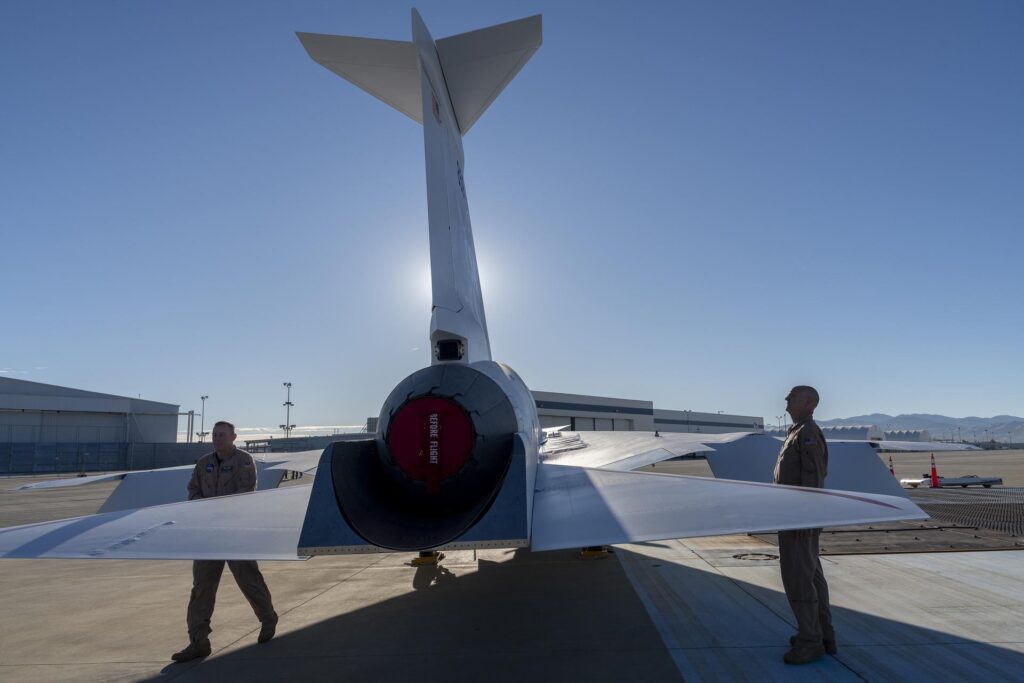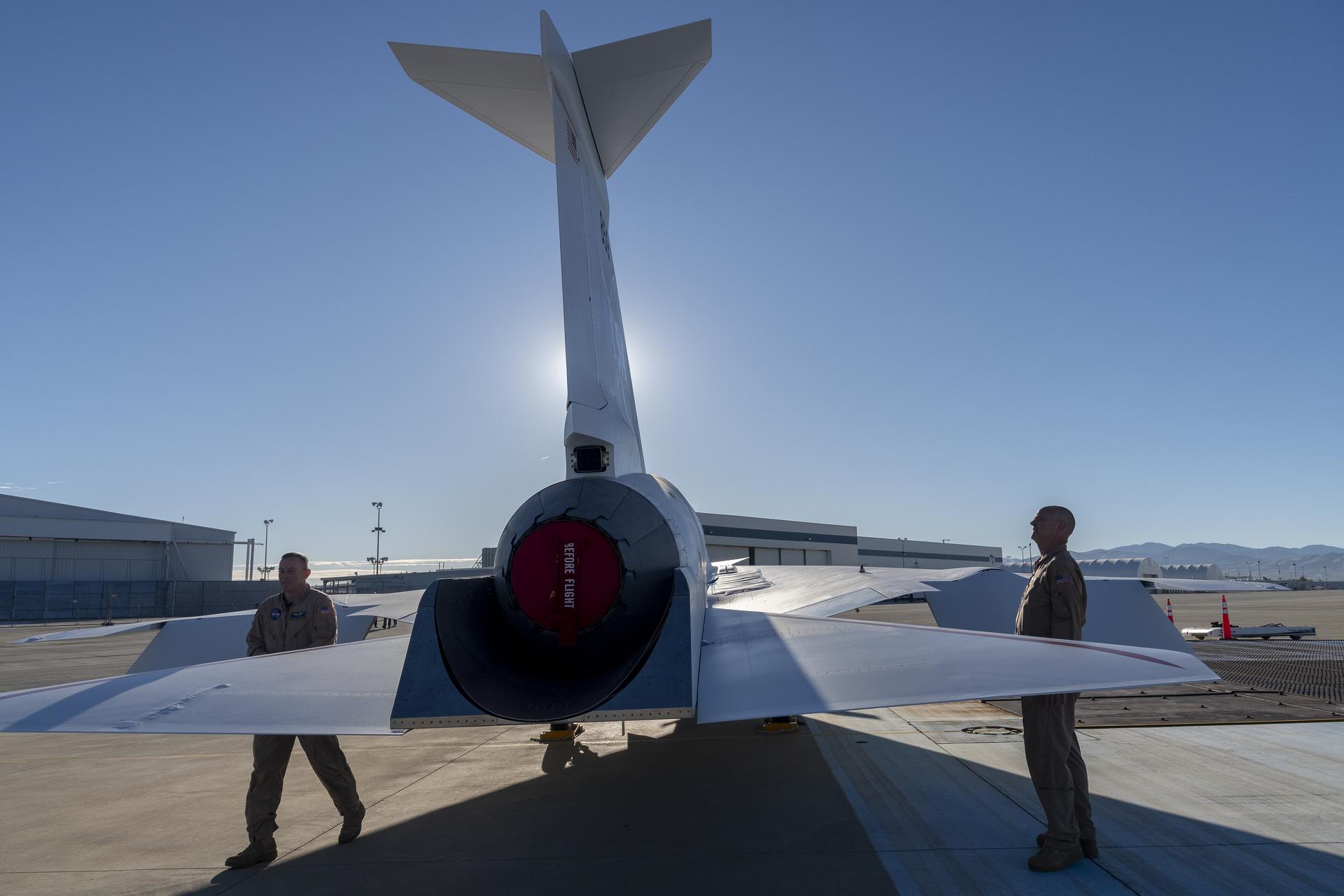NASA X-59, supersonic flight, quiet supersonic aircraft, Flight Readiness Review, Quesst mission, Lockheed Martin, sonic boom reduction, air travel innovation, NASA Armstrong, supersonic commercial flight
Discover how NASA’s X-59 aircraft has passed a crucial milestone, bringing it closer to revolutionizing supersonic air travel by reducing the noise of sonic booms. Learn about the Flight Readiness Review, upcoming safety reviews, and the future of quiet supersonic flight.

NASA has achieved a significant milestone in the development of its innovative X-59 aircraft, a key component of the agency’s Low Boom Flight Demonstrator project. This advancement brings the X-59 closer to its first flight, a crucial step in NASA’s mission to revolutionize supersonic air travel by reducing the disruptive noise of sonic booms to a mere thump.
Milestone Achievement: Flight Readiness Review
The recent completion of the Flight Readiness Review (FRR) marks a pivotal moment for the X-59 project. This review was conducted by a board of independent experts from across NASA, who meticulously examined the project team’s approach to ensuring safety for both the public and NASA staff during the ground and flight testing phases. The FRR scrutinized the team’s analysis of potential hazards, emphasizing the identification and mitigation of risks.
Unlike traditional evaluations, the FRR is not a binary pass-fail test. Instead, it provides the project team with valuable insights and recommendations that will guide them through subsequent stages, including systems checkouts on the ground and the first flight. Cathy Bahm, the project manager for NASA’s Low Boom Flight Demonstrator, highlighted this approach, stating, “We’ll be getting actions from the board and will work with them to resolve those and work toward the Airworthiness and Flight Safety Review.”
Developing the X-59: A Collaborative Effort
The X-59, developed in collaboration with Lockheed Martin, is a cornerstone of NASA’s Quesst mission. This mission aims to collect data that could potentially reshape commercial air travel, allowing for supersonic flights over land without the disruptive noise traditionally associated with breaking the sound barrier. For over 50 years, commercial supersonic flight over land has been banned due to the loud and startling sonic booms. The X-59 seeks to change that with its groundbreaking design.
Jay Brandon, the chief engineer for the Low Boom Flight Demonstrator project, explained that the FRR not only focused on specific aspects of the X-59 team’s work but also provided a comprehensive overview and update on the entire project. “It gave us the opportunity to stop working for a minute and gather what we’ve done so we could tell our story, not just to the board, but to the whole project team,” he said.
Next Steps: Airworthiness and Flight Safety Review
With the FRR completed, the next significant milestone is the Airworthiness and Flight Safety Review. This review will be conducted by a board comprising senior leaders from various NASA centers and Lockheed Martin. The board will evaluate the findings from the FRR and the project team’s responses to these findings. Based on this evaluation, the board will send a recommendation to the director of NASA’s Armstrong Flight Research Center, who holds the authority to sign the airworthiness certificate.
The final step before flight approval involves a technical brief to another review board. This brief will detail the test objectives, methodologies, risks, and risk-mitigation strategies. Led by NASA Armstrong’s chief engineer, Cynthia J. “CJ” Bixby, the board will review the brief and require the team to address any issues before signing a flight request.
Brad Neal, chairman of the X-59 Airworthiness and Flight Safety Review board, emphasized the innovative nature of the X-59. “None of these systems have ever worked and played together before,” he said. “It’s a brand-new thing that we are developing, even though they’re components that have been on different legacy aircraft. As we get into integration testing here, it’s going to be a great opportunity to learn.”
Preparing for First Flight
Before the X-59 can take to the skies, several critical steps remain. The team is gearing up for major ground tests, focusing on systems integration, engine runs, and electromagnetic interference. These tests are vital to ensure that all components of the aircraft work harmoniously and safely.
Despite its cutting-edge design, the X-59 incorporates many components from well-established aircraft. For instance, it uses landing gear from an Air Force F-16 fighter, a cockpit canopy from a NASA T-38 trainer, and a control stick from an Air Force F-117 stealth fighter. The integration of these components is a complex task, but one that is essential for the success of the project.
A New Era in Air Travel
The X-59 represents a bold step forward in aviation technology. By significantly reducing the noise of sonic booms, it has the potential to transform commercial air travel, making supersonic flights over land feasible and more environmentally friendly. This could open up new possibilities for faster, more efficient travel, benefiting both passengers and the aviation industry.
Cathy Bahm expressed her excitement about the project’s progress, despite the challenges ahead. “It’s really an exciting time on the project,” she said. “It’s not an easy road, but there’s a finite set of activities that are in front of us.”
In summary, NASA’s X-59 is poised to make history by overcoming the longstanding barrier of sonic boom noise. With the completion of the Flight Readiness Review and the upcoming Airworthiness and Flight Safety Review, the project is well on its way to achieving its goal. As the team prepares for the first flight, the world watches with anticipation, eager to see the dawn of a new era in supersonic travel.
Read More-
- NASA Plan to Build a Railway System on the Moon
- Curious Asteroid Selam, Spotted by NASA Lucy Spacecraft, Is a Cosmic Toddler
- New NASA Black Hole Visualization Takes Viewers Beyond the Brink
- NASA Mobile Launcher 2: Engineering the Future of Lunar Missions










